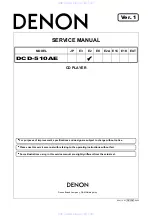
10. Using the plane
10.1 Using the switches (Fig. 3)
Item A:
Surfacing mode
Item B:
Thicknessing mode
Item C:
ON button
Item D:
OFF button
Item E:
Emergency stop button
Item F:
Closable switch cover
Item G:
Connection socket
10.2 Direction of rotation (for NHM 260/400)
Important:
It is essential that you check the direction
in which the planing knife turns. To do this, switch the
machine on and off briefly. The planing knife must
turn clockwise when viewed from the front of the
machine (see the directional arrow on the front of the
machine). If this is not the case the direction of
rotation must be corrected. Please contact an
electrical service center to have this done.
10.3 Fitting the parallel stop (Fig. 33)
Slacken the ratchet lever (16) to adjust the parallel
stop (6) to the desired workpiece width. Opening the
ratchet lever (15) enables the stop rule (39) to be
swivelled to the required angle.
Please note:
The
stop rule (39) must always lie on the table (13).
10.4 Adjusting the planing knife cover
(Fig. 34)
The planing knife cover (12) is infinitely adjustable to
the width of the workpiece. To do so, first release the
clamping lever (7). Then move the selector lever (10)
to adjust the height of the planing knife cover (12)
relative to the height of the workpiece.
10.5 Adjusting the chip depth for
surfacing (Fig. 1/35)
The chip depth is infinitely adjustable using the
setting knob for chip depth (9). The setting can be
read on the scale (40).
10.6 Adjusting the thicknessing table (Fig. 42)
The thicknessing table (42) can be adjusted to the
desired dimension using the crank (4). The
dimension required can be read from the pointer
(41) on the scale (33).
11. Resetting for thicknessing
11.1 Removing the parallel stop (Fig. 19)
To remove the parallel stop (6), follow the above
instructions in section 9.6 in reverse order.
11.2 Removing the planing table (Fig. 39/40)
To remove the planing table (14), follow the above
instructions in section 9.4 in reverse order.
11.3 Turning the chip housing over (Fig. 40-42)
Turn the thicknessing table (42) right down with the
handcrank (4) and swing the sawdust extractor (5)
up.
12. Operating in surfacing mode (Fig.
37/38)
Place the material flat on the infeed table (13) and
adjust the desired height of the planing knife cover
(12) with your left hand. The material should not come
into contact with the planing knife cover (12) when
you do this. Start the machine in surfacing mode (see
10.1) and push the material slowly and steadily
against the knife block (23). Important:
Move your
hands up over and away from the knife cover.
Always keep your thumbs against your hands
while surfacing.
To align the narrow side of the workpiece, release the
clamping lever (7) for the planing knife cover (12) and
adjust the cover (12) to the required width. The plastic
spring (43) at the end of the planing knife cover (12)
should press lightly against the workpiece. Lock the
planing knife cover (12) in the correct position and
start the machine. Push the workpiece slowly and
steadily against the knife block (23). Make sure that
the parallel stop (6) is set to an angle of exactly 90°
(or an alternative desired angular distance). The
workpiece must lie flat against the parallel stop.
Important!
It is imperative that a push stick is used
for all surfacing work on short workpieces (3)!
13. Operating in thicknessing mode
(Fig. 42/43)
Prepare the machine for thicknessing as described in
section 11. Adjust the thicknessing table (42) to the
desired material thickness. The setting must not
exceed a maximum of 5 mm from the actual thickness
of the material (see section 10.5). Start the machine
in thicknessing mode (see 10.1) and place the
workpiece on the thicknessing table with the planed
side facing down (42). Push the workpiece slowly
forwards until it is picked up by the feeding roller (44).
Wedge-shaped workpieces should always be fed in
with the thicker end first.
GB
23
Anleitung NHM 260-400-230_SPK1:Anleitung NMH 260-400-230_SPK1 02.10.2006 8:23 Uhr Seite 23
















































